The boats all ready to launch now, but the yard were late getting the paint on, so we slipped a day, but I’m more than happy as I gained two days hauling early.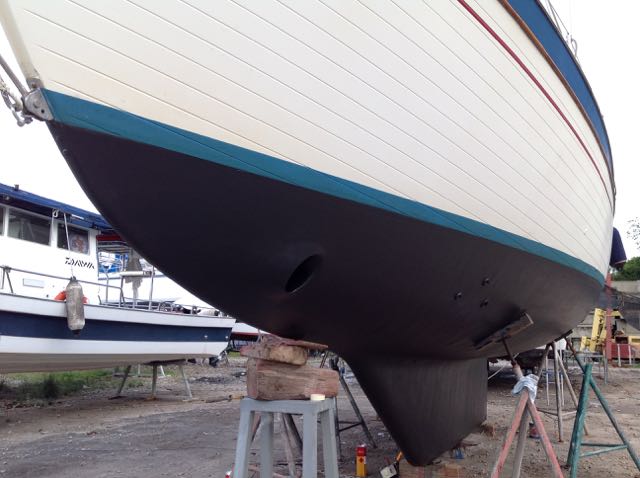 Once the hull / keel was properly cleaned and rubbed down in the damaged areas, it was clear that there was nothing to fill really, the gouges were in the crud mostly. So we applied primer and then another coat of antifoul and she’s ready to go. I made adjustments to the propeller, as it can be changed so that the angle of the blades can be finer or courser to the water. The exact setting (pitch) is critical to get the maximum power transfer from the engine to the prop and provide drive. It was obviously wrong, as the engine could only get to half the revs it should. This is typically caused by too much pitch, or too aggressive a propeller. The last engineer to take the prop off, didn’t put it back on properly. So that’s sorted, I’m hoping for a good improvement, but expect more fine tuning will be needed when the boat comes out next.
Once the hull / keel was properly cleaned and rubbed down in the damaged areas, it was clear that there was nothing to fill really, the gouges were in the crud mostly. So we applied primer and then another coat of antifoul and she’s ready to go. I made adjustments to the propeller, as it can be changed so that the angle of the blades can be finer or courser to the water. The exact setting (pitch) is critical to get the maximum power transfer from the engine to the prop and provide drive. It was obviously wrong, as the engine could only get to half the revs it should. This is typically caused by too much pitch, or too aggressive a propeller. The last engineer to take the prop off, didn’t put it back on properly. So that’s sorted, I’m hoping for a good improvement, but expect more fine tuning will be needed when the boat comes out next.
The keel, that’s the thin bit hanging down, is actually solid, and part of the boat. It’s made hollow in the mould, with walls that are very thick, I think more than 4cm, then the void is filled with iron crud, could be anything, but it weighs several tons. Once it’s all stuffed in, a polyester resin is poured in to seal and fix everything in place. So effectively it becomes one solid, very heavy piece that is part of the boat, with no joins that can fail. This I think is one of the strengths of this type of construction, and is why I suffered next to no damage in the grounding, not that I will be doing that again in a hurry! More modern yachts have an all metal keel, bolted onto the bottom of the boat, this makes them faster, lighter and much more manoeuvrable, but they occasionally lose their keel and sink. The bolts also fail or leak, but I think they are a lot better these days.
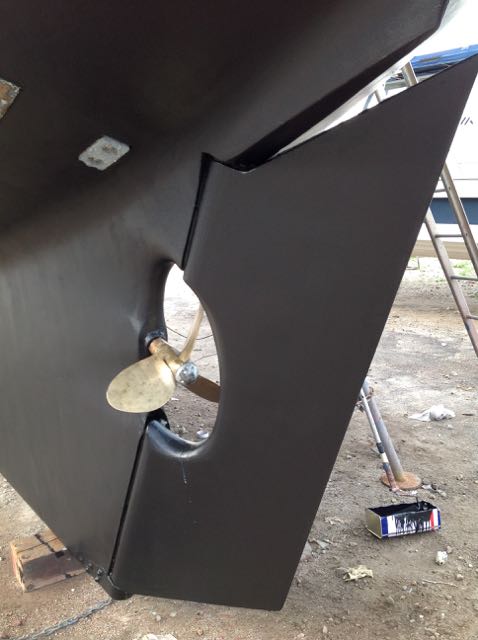
I got to use my new grease gun on the prop with some rather expensive grease I shipped out here. I’m no expert with grease guns, and suffice it to say, the prop, boat, me and quite a bit of the yard is well greased now.
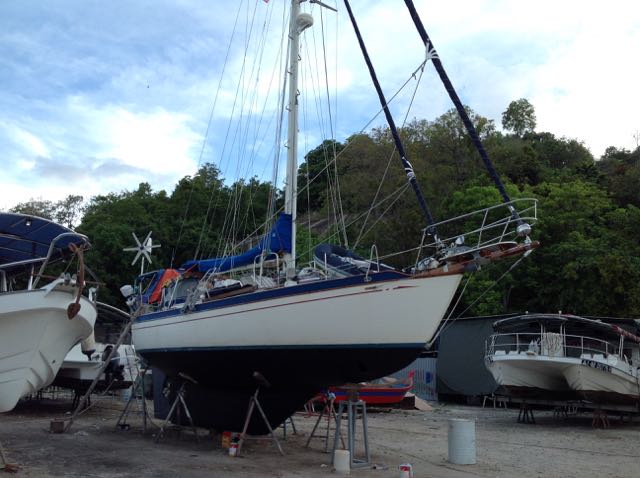
From this angle the boat looks deceptively fast, shame that’s not true.
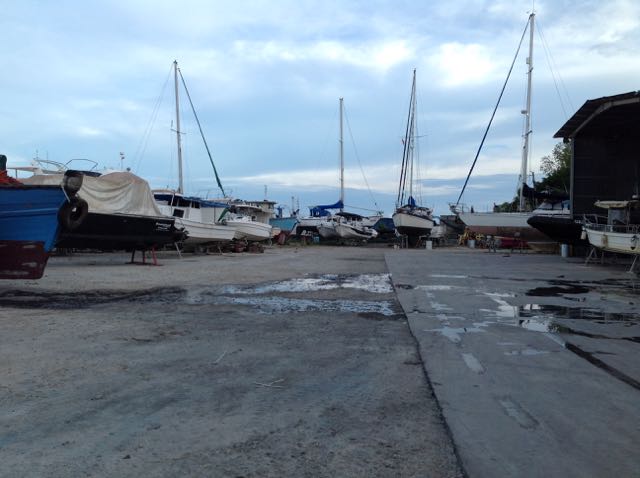
Above you can see the corner I’m tucked into and below the mass of mostly decrepit boats around me.
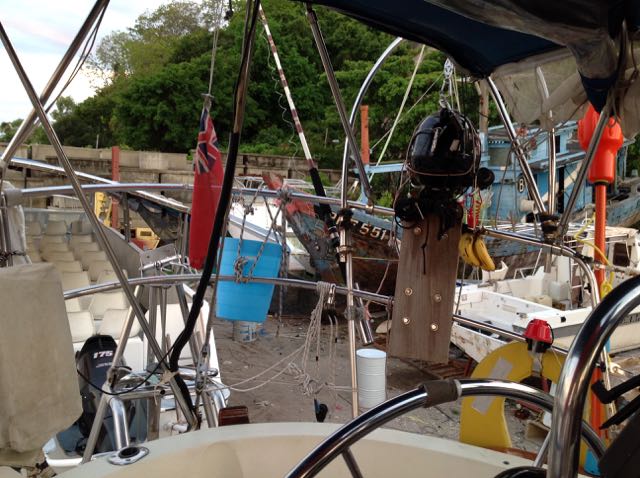
There was a big fishing boat blocking me in, it came in right after me, one of the propellor blades had fallen off, but when I got back to the boat it had been launched. Every day in the yard is a day of bills, and a day not catching fish, so they tend to turn around very quickly. I took the pictures below just before they motored off. I’m quite fascinated by these boats, they truly are working boats, there’s nothing fancy on them, and despite their crudeness, I expect there’s a lot you can learn from their minimalistic approach.
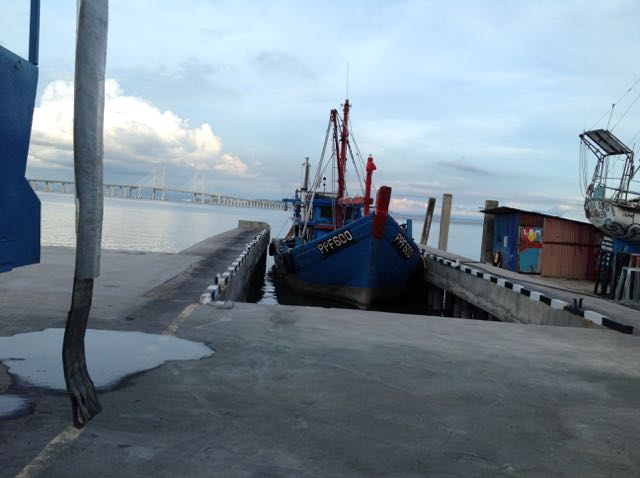
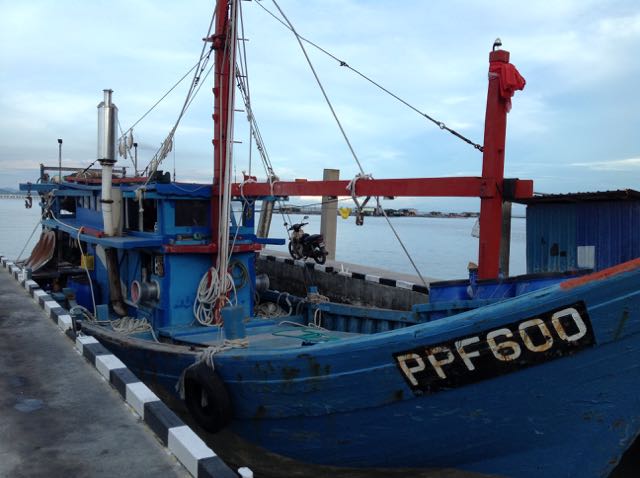
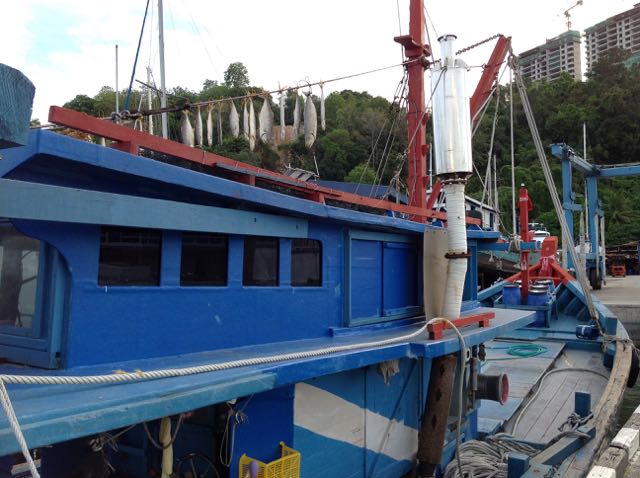
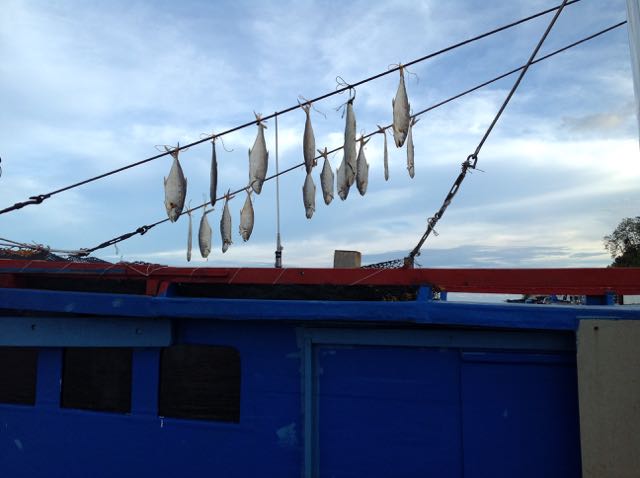
What’s with the fish?
 Can you see the wheel?, is this where they wind it up?
Can you see the wheel?, is this where they wind it up?
Theres another old boat in the yard that intrigued me, it looked like the worst fiberglass boat I had ever seen. I wondered how the mould could be so bad, but then I worked out that this is probably a wooden boat and it’s been encased in fiberglass. Please tell me if I have it wrong, I can’t believe someone could actually turn out a boat this bad. The very thought that there is a wooden boat rotting away inside the fiberglass shell is just as worrying.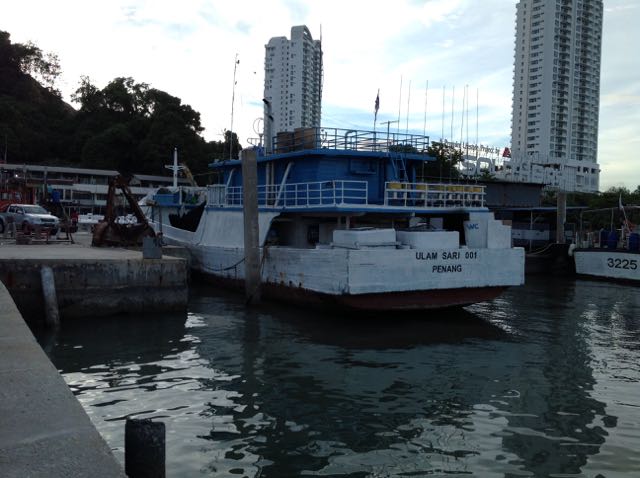
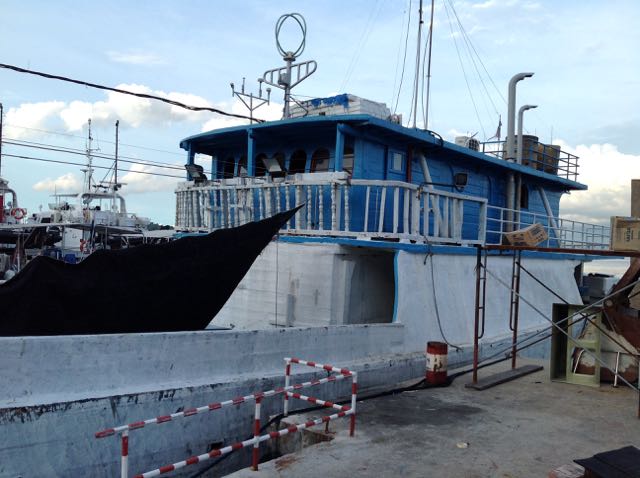

On an aside, I’m not going to name names, but if anybody wants to leave a bottle of vegetarian mushroom/tomato sauce bottle in the fridge, horizontally, could they please close the lid first!
So up early tomorrow, I need to clean the log before launch, thts a little propeller thing that sticks out of the bottom of the boat and revolves as we go along and sends pulses to the speedo, or log as we call it. This gives me the speed though the water, which is different from the spped on the GPS, which is the speed over the land below the water. The water either adds to my seed or takes away from it, depending on the flow of the tide. It’s called a log, allegedly, because it used to be a log, thrown over the bow, and someone would count how long it took to get to the stern of the boat, from this the speed could be calculated. Not sure if this is the same log as in data logger, but I expect the log book was where they recorded the readings.
Then I need to fit the windvane steering rudder and vane, get rid of the rubbish and pay the bill. I expect I wont be away much before eleven, which is a problem, my next anchorage is by Pangkor, which is 60 miles away, which could take me more than 12 hours. The tidal currents get stronger now as I head south down the Malacca straits, so 5 knots seems like the best I can hope to average. I don’t want to sail solo in the dark, so I’m going to do a two hour motor around the corner to a little island called Palau Kendi I, have a lazy time washing the boat, and passage planning the rest of the trip south, then at 7AM Saturday as the sun rises I will be off to Pangkor, not the marina, but to an anchorage, just for the night then push on further south. I need to get close to Singapore for when Kathy gets out here.
The plan to sail to America from Japan in July is getting serious now, this is going to be the most challenging sail I have ever done, so I have a lot of prep to do. It’s a long journey for two people, could be 6 weeks or more!
Paul Collister

I dunno, I think that boat has a certain charm. I can picture Humphrey Bogart tending to the cranky engine (which isn’t cranking) while Katharine Hepburn smokes cigarettes. Mind you, it would be better-suited to an African river than a big ocean. I can imagine it wending its way upstream at about three knots, while sipping gins and tonic on that rear deck.
…sipping moonshine style Gin & Tonics I’d think.
Paul, – the coat of antifoul makes it look very smart. Hope the prop improves things – should it help with diesel consumption?
I hope so Tim, but I fail to see how running the engine faster for the same speed makes it consume less fuel. I have to admit that the whole area of power transfer has always confused me, both in mechanical and electrical situations. I have a bookmark on Power Factors waiting for me to read, I want to understand this better before buying new solar panels.
I will let you know in a few weeks time when I top up, but I have read that it’s very important to run the engine close to max revs often, and always running at lower revs will kill them off! counter intuitive I know.
Talking of counter intuitive, since I changed my bowsprit, and re-fitted the anchor and chain, my markings are all in reverse, and the original markings in reverse now make sense! Dam.
Hi Paul, Regarding efficiency, its a little tricky as, theres hourly cosumption and voyage consumption, and its more confusing when you add motor sailing in the mix. But if you can find engine manufacturers performance curves, the sweet spot is where the torque curve is a maximum, but you may be unhappy with the speed.
When your prop pitch was course, there was insufficient air (RPM x swept volume) at the lower revs, and probably higher Exh temperature. Incomplete combustion is not good, combustion chamber gets sooty and more wear particles makes the rings job harder, you didn’t do any harm in the time between inspections time was short. By the way, look for soot leaking from the #4 injector. It will indicate exh leakage. When I cleaned it up, I didn’t have the right tools. This may need attention.
Thanks for that, well there has been no wind, So I have been motoring for 2 days at a constant 6 knots through water, at about 2200RPM, so I’m hoping when I top off the tank I will have a good idea about consumption, so far I would say it’s between 5-6 litres/hour, based on the fuel gauge, which isn’t that accurate.
All the injectors look identical as I did look for any difference on No 4. I need to look for the engine power curves, had them on my baba 30 Beta Marine, and they were very enlightening.